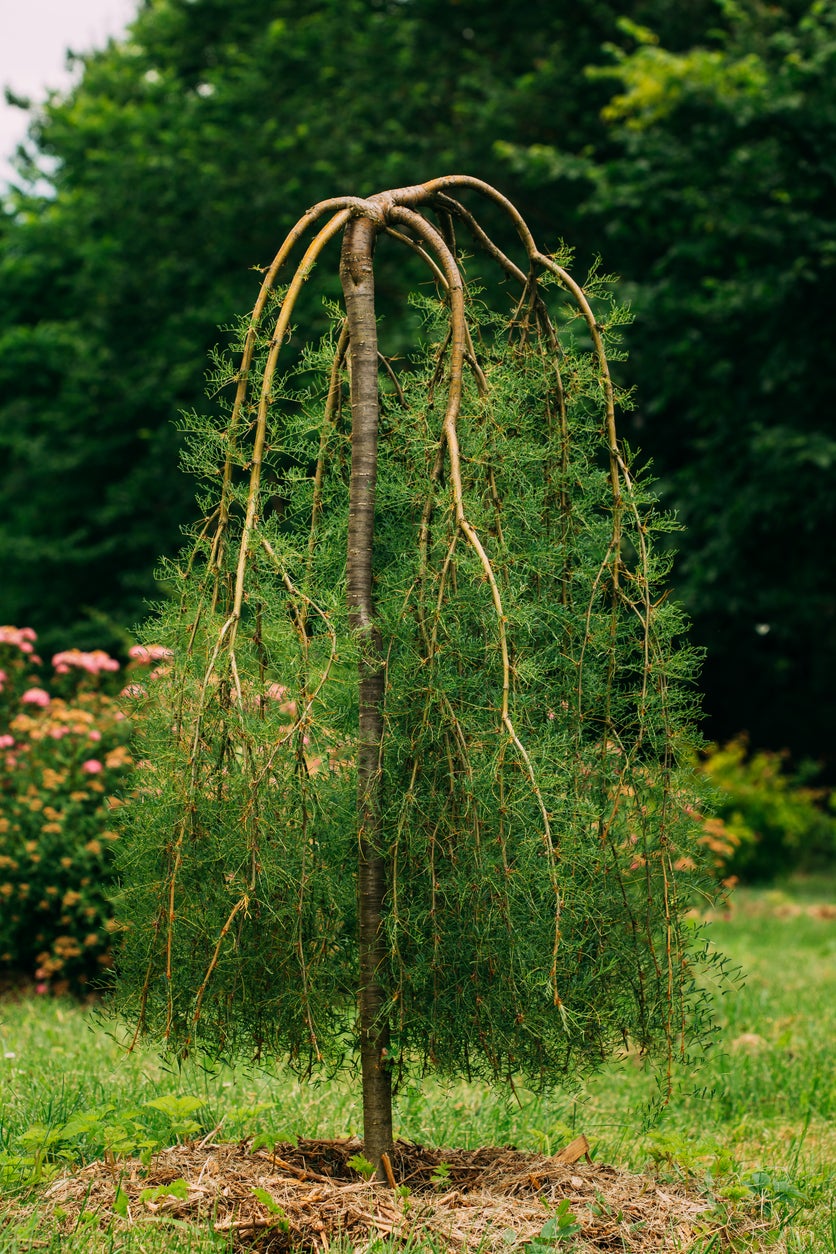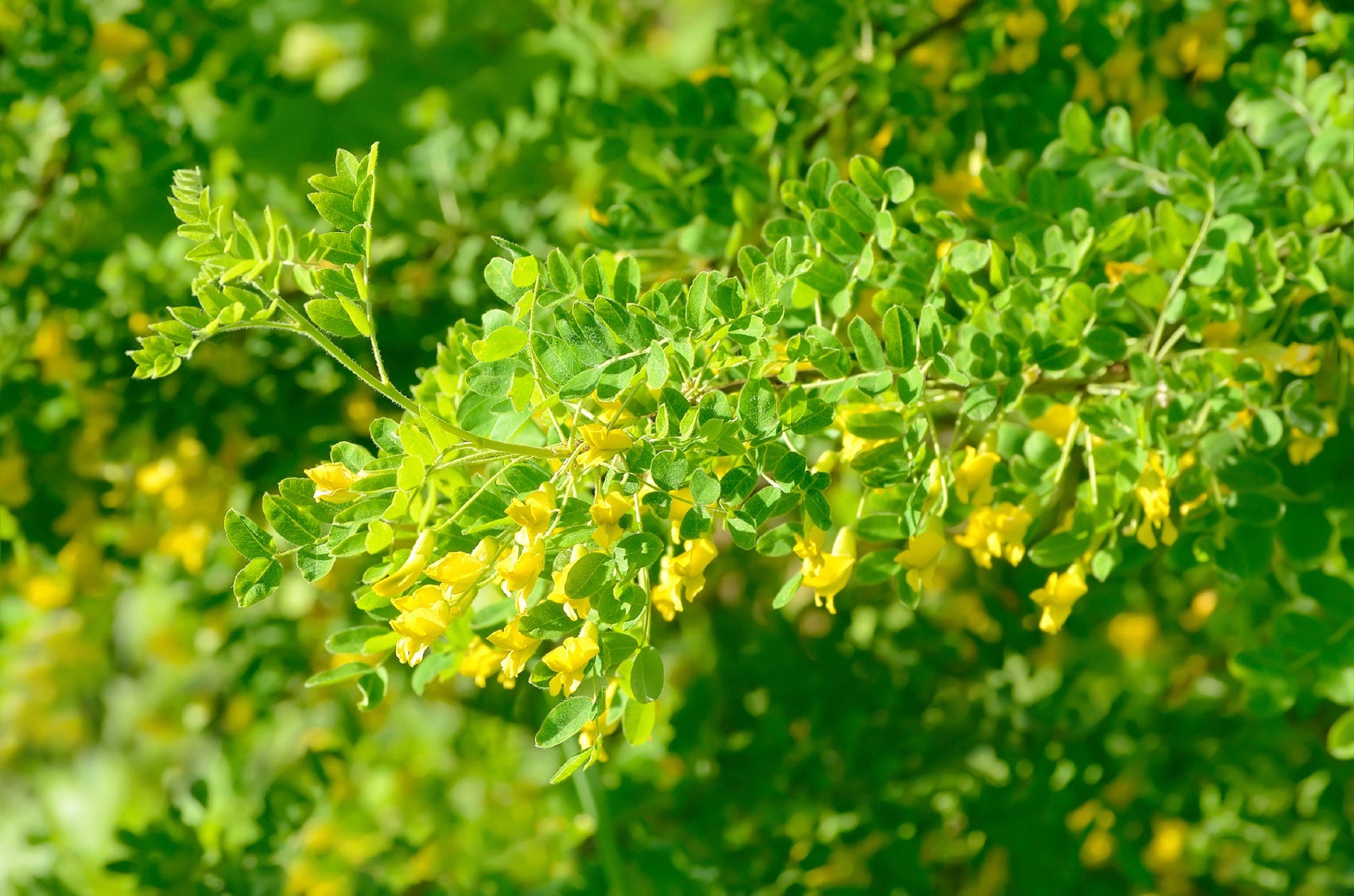Weeping Peashrub Info: Growing Walker’s Weeping Peashrub Plants


Walker’s weeping peashrub is an attractive and extremely cold hardy shrub grown both for its toughness and unmistakable shape. Keep reading to learn more about how to grow a weeping caragana shrub.
Weeping Peashrub Info
Walker’s weeping peashrub (Caragana arborescens 'Walker') is a cultivar that has to be grafted into a particular shape. A regular Caragana arborescens (also called a Siberian peashrub) has a traditional upright growth pattern. In order to achieve Walker’s distinctive weeping structure, stems are grafted at right angles from the top of a single upright trunk. The result is a unique and remarkably uniform weeping shape as the stems grow out from the trunk and then straight down to the ground. The plant’s leaves are very thin, delicate, and feathery, making for a beautiful, wispy veil effect in the summer. Walker’s weeping peashrubs tend to reach 5 to 6 feet (1.5-1.8 m.) in height, with a spread of 3 to 4 feet (0.9-1.2 m.).
Walker’s Weeping Caragana Care
Growing Walker’s weeping peashrub plants is surprisingly easy. Despite the delicate appearance of the leaves and the dangling branches, the plant is native to Siberia and hardy in USDA zones 2 through 7 (that’s hardy down to -50 F. or -45 C.!). In the spring, it produces attractive yellow blossoms. In the autumn, it loses its feathery leaves, but the singular shape of the trunk and branches provides good winter interest. It thrives in full sun to partial shade. Despite the shrub’s shape, it actually requires very little training or pruning (beyond the initial grafting). The stems should naturally start curving down, and they will grow more or less straight toward the ground. They tend to stop about halfway to the ground. This removes any concern of them dragging in the soil, and it leaves the single bottom trunk somewhat exposed to add to the allure of its unusual shape.
Gardening tips, videos, info and more delivered right to your inbox!
Sign up for the Gardening Know How newsletter today and receive a free copy of our e-book "How to Grow Delicious Tomatoes".

The only child of a horticulturist and an English teacher, Liz Baessler was destined to become a gardening editor. She has been with Gardening Know how since 2015, and a Senior Editor since 2020. She holds a BA in English from Brandeis University and an MA in English from the University of Geneva, Switzerland. After years of gardening in containers and community garden plots, she finally has a backyard of her own, which she is systematically filling with vegetables and flowers.
-
 Looking For Plants To Give You The Soft And Fuzzies? Try These 5 Fuzzy Leaf Plant Options
Looking For Plants To Give You The Soft And Fuzzies? Try These 5 Fuzzy Leaf Plant OptionsLovers of texture, drama, silver foliage and tactile plants will adore these special sensory garden additions. These fuzzy leaf plant options will leave you all aglow
By Susan Albert
-
 Get Ready For A Summer Of Hummers! Grow These Full Sun Hummingbird Plants and Flowers
Get Ready For A Summer Of Hummers! Grow These Full Sun Hummingbird Plants and FlowersIf you’re lucky enough to enjoy a sunny backyard, make sure you are maxing out on your pollinator opportunities and grow these full sun hummingbird plants and flowers
By Tonya Barnett
